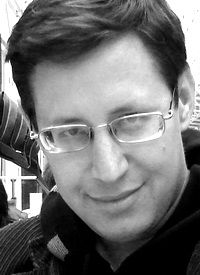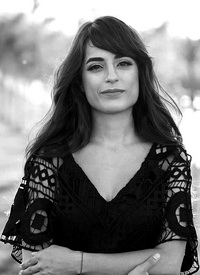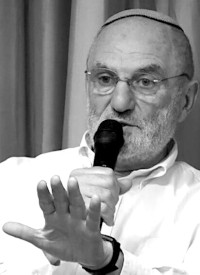
The American channel HBO recently broadcasted Chernobyl, a series that has even been referred to as “the most successful TV show in history”, according to the users of the popular reviewing website IMDB (Internet Movie Database). Worldwide famous celebrities, such as the master of thrillers, Stephen King, speak enthusiastically about the programme, and political communities and mainstream media platforms around the world speak about it with enthusiasm. The biggest TV channel in Ukraine, 1+1, have already announced that it will broadcast Chernobyl in the country, thereby reaching millions of viewers who are not usually interested in such intellectual programs.
But this show has instantly become the focus of hard fought discussions, to a great extent because its creators are offering the spectators their own, highly mythologized view of the Chernobyl nuclear power plant disaster. They gradually impose their opinion on to the viewers about the not so distant Soviet past, which can easily replace the reality of the late Soviet era in the public mindset. It is not about issues surrounding nuclear physics but rather about the socio-political dimension of Chernobyl’s catastrophe, through which they aim to portray the reality of the developed socialism of the late 1980s. And this ‘artistic reality,’ produced by a team of American and British directors, can create roots in our society as an incontestable historical reality.
I could not avoid watching Chernobyl, starting with the fact that the theme is deeply personal for me and my family. In the April of 1986, we lived opposite the Kiev Regional Firefighter Department HQ, from where fireman, under the command of Major Leonid Telyatnikov, went to the blazing nuclear plant. Nowadays, this building hosts the National Museum of Chernobyl, but back then 33 years ago, we would hear this word for the first time, because rumours of an unusual nuclear emergency spread rapidly in Podol, a neighbourhood of Kiev. People would securely shut their windows, wash their hands with sodium bicarbonate, buy up the contents of pharmacies and gossip amongst themselves about the threats of invisible radiation.
One week later, on 3rd May, we were directly affected by what happened in Chernobyl. On that day, my father, the foreman of a mining team, volunteered to deal with the aftermath of the accident together with a team of metro builders. They would dig a tunnel in order to cool the exploded reactor and work in Chernobyl until the 17th May. Yes, he was one of the miners who, in the series, were supposedly forced to go to the nuclear plant at gunpoint, where, completely naked, they would descend under the burning fourth reactor. Needless to say, his memories are significatively different from the fantasies of the HBO writers.
After that, a rushed evacuation of Kiev took place, something that would stay in my mind forever, together with the traumas of ‘radiophobia.’ We would spend the rest of our childhood under the influence of this. It was a topic that would be everywhere, from TV shows to popular jokes. The “totalitarian state” didn’t abandon us to fate, the family received free vouchers to the baths of Koblevo (a beach resort on the Black Sea coast). Despite this, there would still be some time before our stay there, and Kiev residents were in state of panic, trying to get their children out of the city immediately. My grandmother went to the train station in an attempt to buy tickets. There she met a woman from the Nikolaev region, who offered their house for us to stay for free, all of us, including my new-born sister. I am deeply sad that such acts of solidarity, absolutely impossible in today’s reality, could not find a place in the series.
At the end of the 1990s, I would make frequent visits to the Chernobyl nuclear power plant, to write a series of articles about illegal iron scrap and wood trade, about the problems of the nuclear repository and the settlers who returned to the area illegally. These articles were published by Ukrainian, Russian and European media, and even reverse translations were made by InoSMI (a website that publishes translations of foreign articles). Long before Chernobyl was fashionable, as a result of movies and computer games, we were talking about numerous social problems in the exclusion zone. And despite never considering myself to be a specialist about Chernobyl (I would get rather jealous when reading the authoritative comments of specialists), over the years I created a very objective impression of what happened there after 1986.
It has been said that the series claims to have reconstructed the era as accurately as possible, in order to introduce the viewer to the atmosphere of the late USSR. Their stylists would buy massive amounts of old clothes and objects typical of Soviet daily life, studying fashion through old photo albums. Even so, this precision in small specific details, so impressive to many Ukrainians and Russians, does not make the show realistic. And not just because, or in spite of this, the daily life of the Soviet people is portrayed by the authors in overtly pejorative undertones, in a way that all inhabitants of Pripyat are shown as gopniks (a Russian term for anti-social poor people, more or less the same as “chav” in a British context), who drink whenever possible, and the house in which the famous scientist, Valery Legasov, lived in Moscow was poorer and more neglected than an average family apartment.
Much more relevant is paying attention to the ideological figures of the series. They represent the late Soviet Union as a totalitarian, ugly and distorted dictatorship. In some respects it was shown to be crueller than the Stalinist Era of the 1930s; one where villains are cruel and bureaucrats incompetent, caring little about the lives of the citizens. They organise secret meetings in a bunker, under an enormous Lenin portrait, when an old OGPU-NKVD-KGB veteran orders that no one is allowed to leave Pripyat, living or dead, and everyone applauds this suggestion enthusiastically. After this, one of the officials sends an engineer to the power station under armed guard, forcing him to look directly into the mouth of the destroyed reactor. This is only one of the preposterous scenes that peppered the plot of the five episode series.
The Ukrainian journalist, Yuri Tkachev, commented and not without irony, “There are ministers, who walk around the power station area accompanied solely by gun-toting guards, who are seen drinking litres and litres of vodka, right there at work (after all, everyone knows Russians don’t do anything other than drink vodka) and of course, there’s the sinister and omnipresent KGB, against which the heroes of the show have to fight, even more than the radiation. At the same time, the authors are precise even in details that have no fundamental meaning. They obviously did a great job at studying how events developed. And this is what impresses the most: this ugly and distorted picture of those days were presented to us by people who know exactly what really happened. This is not “artistic fiction”, where the authors fill any gaps in their knowledge with their imagination. No, the authors deliberately distort the reality, showing the workers and managers of the plant as incompetent and dishonest, the authorities as cruel and irresponsible, and even the Pripyat people who, despite being shown as good natured, appear as extremely stupid, ignorant and naïve.”
It is impossible to hide the numerous cinematographic bloopers – Bloomberg, Forbes, Novaya Gazeta (a Russian anti-Putin liberal magazine famous for investigative journalism) and Snob, who cannot by any means be accused of sympathizing with the Soviet past, wrote about them in detail in their reviews. Therefore, advocates of the series justify the generously spread ‘radioactive bullshit’ over the five episodes, claiming that the authors have the right of free artistic interpretation of the facts.
But a quality thriller about Chernobyl does not need a strong ideological component. It is perfectly possible telling this story with honesty, not whitewashing, but also not demonizing Soviet life and society, which had innate defects that in many ways predetermined its end. The actions of the party leaders certainly deserve major criticism, especially regarding the Chernobyl disaster itself. But the authors exaggerate the problems of this era and whenever possible push the viewer to draw purely political conclusions: that the Soviet system worked through coercion, lies and fear, and being completely ineffective was the main cause of the accident, as described in the series.
This theory is the main punchline in all episodes. “Chernobyl is a grimly beautiful portrait of a sick political system that did not die as violently as it should”, proclaims Tom Nichols in The Atlantic, apparently regretting that a country that suffered a nuclear accident did not also endure the purge of a nuclear bombardment.
But most importantly, is that the creators of this “fiction” series insist that throughout it has a rigorous documentary basis, presenting their work as an adapted version of the post mortem notes of Valery Legasov, who is portrayed as a fighter against the Soviet regime. Despite this, any well-informed viewer would immediately see that the literary sources of the series are completely different, biased and opportunistic, such as “The voices of Chernobyl”, by Svetlana Alexievich.
Anna Korolevskaya, vice director of the Chernobyl National Museum, who supported the HBO team in good faith, says of the series, “To begin with, despite claiming to be fiction, the characters have the names of real people, who have words put in their mouths, and actions attributed to them. Because of this, many view it as a documentary, and this is the biggest danger (…) I worked with the film crew trying to, how to say, lead them in the right direction. But even so I see they could not get beyond the biased western perception of Soviet history.”
In her interview, she mercilessly criticizes the final version of the series and also rates quite positively the efforts to mitigate the Chernobyl disaster: “Actually,” says Korolevskaya, “forty ministries and departments participated in the disaster mitigation, each of which had their own operation headquarters; their own operation group, all ruled by a governmental commission. This also included members of the government of the Republic of Ukraine (…) But here there is a paradox: this could only have been made by a totalitarian regime. If there were private enterprise in this country, market relations, everything would have unfolded in a different way, as we can see from the example of the Fukushima accident, in Japan.” It seems that she wants to be denounced by the ever vigilant patriot activists of Ukraine.
Despite this, much of the fundamental criticism of Chernobyl misses the target. “The mistakes of the series will hardly be noticed, not just by the western audience, but by the young generations of post-Soviet citizens,” the Bloomberg article says, quite reasonably. The same applies to older citizens, who perfectly remember the reality of the 1980s and can easily notice the small caricatures and farces in the plot. Despite this, they are still happy to praise the show, as this seems to be the new dress code for the Russian, Ukrainian and Belarusian intelligentsia, so inclined are they towards anti-Soviet views. After all, political convenience will take care of the historical truth the writers are demolishing.
Naturally, this causes a symmetric reaction in the shape of many conspiracy theories, which see Chernobyl as a weapon in a new cold war, or an act of sabotage against the nuclear industry of Russia (in the last 15 years, the Russian state company Rosatom controlled 67% of the market of newly built power plants). Personally, I don’t subscribe to these points of view, despite just having read the research of Mikhail Trofimenkov, who wrote a detailed political history of the American cinema, which he considers an efficient tool of state propaganda. And the great and terrible Hunter S. Thompson, published in 1986 an essay about the subversive actions of American Intelligence, who spread rumours about Kiev being in flames, with piles of corpses strewn around.
The ideological message of the series obviously does not stop at the realities of competition in international politics, but also can influence the formation of social consciences in first world countries. First and foremost, the creators of the Chernobyl series appeal to western youth, who consume HBO shows eagerly and would trust without question the producers of the legendary series, The Wire. These millennials do not see possibilities within the stagnating structure of capitalism, and actively support socialist ideas by voting for the old senator Bernie Sanders and the young politicians of the left wing of the Democratic Party. Many of them are not sufficiently satisfied by this and continue to evolve towards political radicalism.
The HBO series helps to stabilize the most dangerous reactor of the today’s world order, to cool down the enthusiasm of potential rebels, who, must be without much complexity to feel threatened by the spectrum of the communist dictatorship. Young educated citizens in the US, Europe, Russia and Ukraine must be convinced that any alternatives to the current system can only lead to Chernobyl, Gulags or Kolyma (an arctic region of Russia also used as a reference to the gulags). In the end, they do not have immunity against well produced propaganda, such our personal living accounts of the Chernobyl disaster, one that many of our generation still endure today.
There is no secret conspiracy of the global elites behind this project. The motivation is something else. An entire galaxy of anti-communist movies that appear one after the other on our screens, even 30 years after the collapse of communism, be it “Dau,” “Holiday” or numerous other productions, such as the Ukrainian agitprop, expresses the conscious point of view of the dominant class that wants to keep the future to themselves, subjugating our history. Criticism of Nazism is not in fashion and instead, all the creative forces are being thrown into the fight against the red menace. At the same time, the humanist legacy of the Soviet era must be discredited and buried, even when the Cuban government’s campaign to rescue children affected by Chernobyl, which they carried on their shoulders for half a century, could have already become an fascinating and brilliant film.
Meanwhile we have nothing to counter this, except our own memory, which doesn’t match HBO’s version in any way.
Andriy Manchuk
Translated by Luiz Freitas and Maria Servalli
-
Історія
Африка и немцы - история колонизации Намибии
Илья Деревянко история колонизации Намибии>> -
Економіка
Уолл-стрит рассчитывает на прибыли от войны
Илай Клифтон Спрос растет>> -
Антифашизм
Комплекс Бандеры. Фашисты: история, функции, сети
Junge Welt Против ревизионизма>> -
Історія
«Красная скала». Камни истории и флаги войны
Андрій Манчук Создатели конфликта>>













 RSS
RSS





